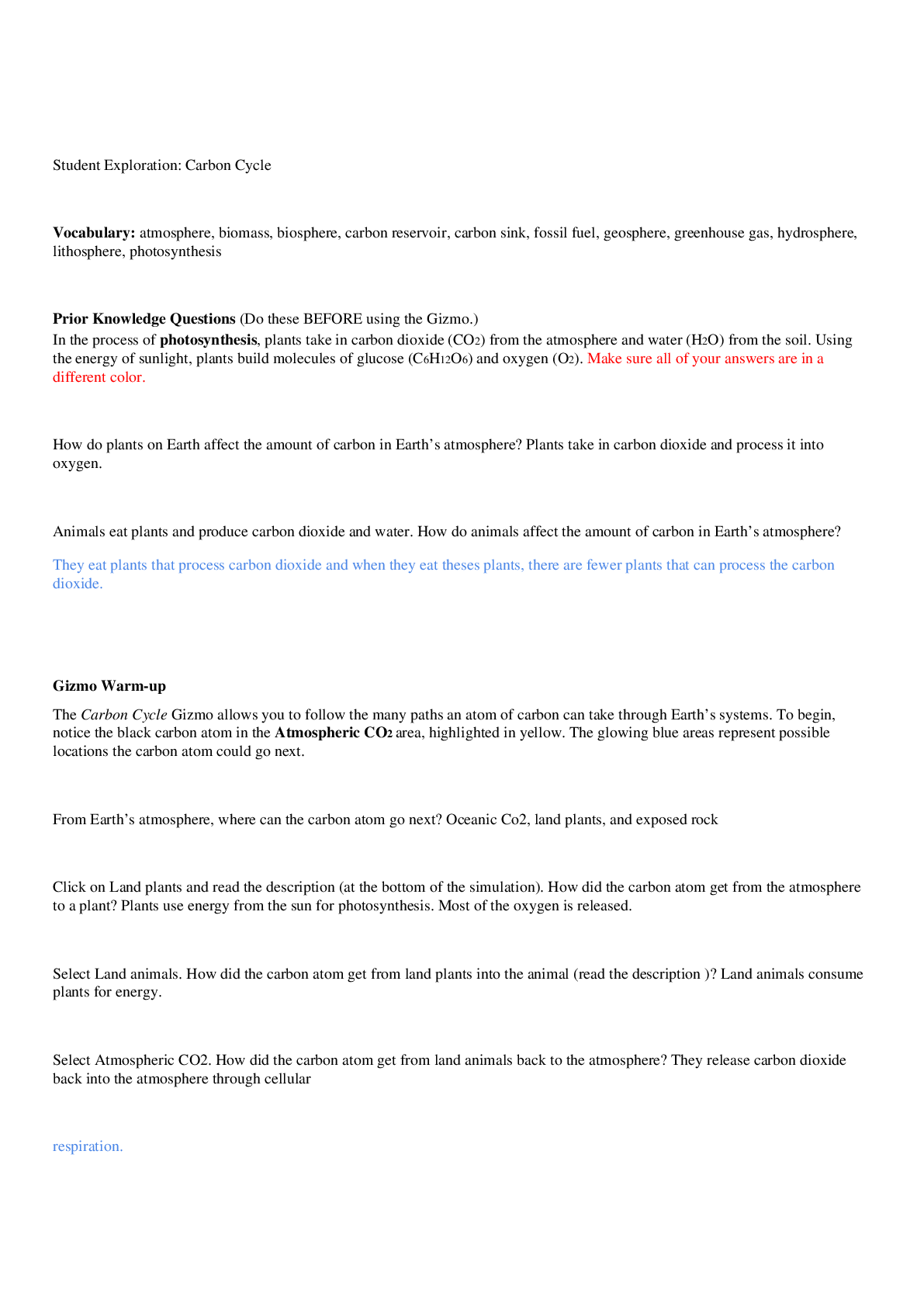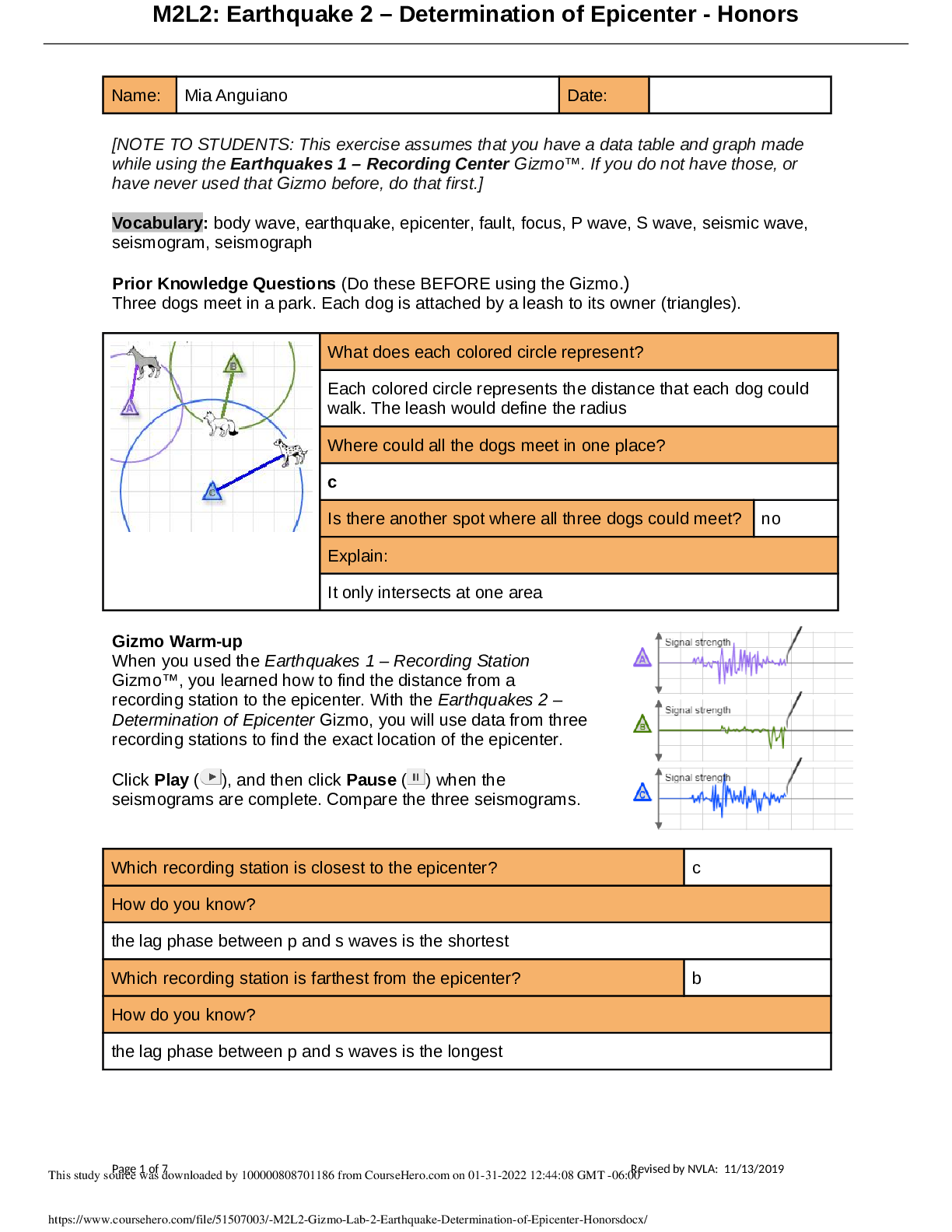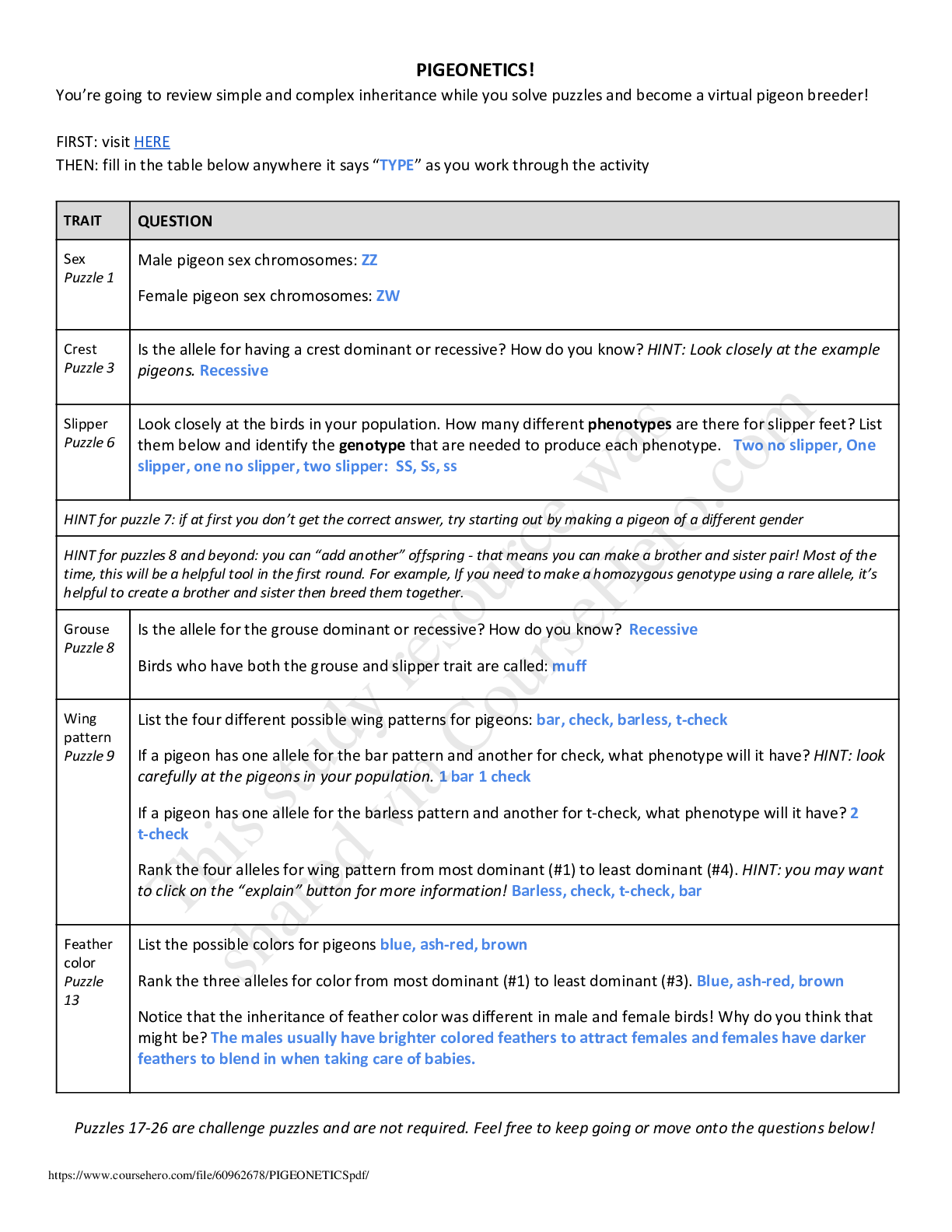Student Exploration_ Ionic Bonds
Document Content and Description Below
Prior Knowledge Questions (Do these BEFORE using the Gizmo.) 1. Nate and Clara are drawing pictures with markers. There are 8 markers in a set. Nate has 9 markers and Clara has 7. What can Nate and ... Clara do so that each of them has a full set? Nate can give Clara a marker 2. Maggie is sitting at a table with Fred and Florence. Maggie has 10 markers, but Fred and Florence each have only 7 markers. How can they share markers so each has 8? Maggie can give Fred and Florence one marker each Gizmo Warm-up Just like students sharing markers, atoms sometimes share or swap electrons. By doing this, atoms form bonds. The Ionic Bonds Gizmo™ allows you to explore how ionic bonds form. To begin, check that Sodium (Na) and Chlorine (Cl) are selected from the menus at right. Click Play ( ) to see electrons orbiting the nucleus of each atom. (Note: These atom models are simplified and not meant to be realistic.) 1. Each atom consists of a central nucleus and several shells that contain electrons. The outermost electrons are called valence electrons. (Inner electrons are not shown.) How many valence electrons does each atom have? Sodium: 1 Chlorine: 7 2. Click Pause ( ). Elements can be classified as metals and nonmetals. Metals do not hold on to their valence electrons very tightly, while nonmetals hold their electrons tightly. Electron affinity is a measure of how tightly the valence electrons are held. A. Try pulling an electron away from each atom. Based on this experiment, which atom is a metal? sodium Which is a nonmetal? chlorine B. Try moving an electron from the metal to the nonmetal. What happens? The chlorine atom took the electron and added it to its outermost shell Page 1 of 10 Student Exploration: Ionic Bonds Introduction: Some of the particles that make up atoms have an electrical charge. Electrons are negatively charged, while protons are positively charged. Particles with opposite charges (+ and –) attract, while particles with the same charge (+ and + or – and –) repel. Question: What happens when atoms gain or lose electrons? 1. Count: Electrons move around the nucleus of atoms in specific shells, shown by the rings around the atoms in the Gizmo. The first ring holds two electrons, and the second holds eight. (Electrons in the inner rings are not shown; you can assume these rings are full.) A. Observe the sodium and chlorine atoms. Assuming that the inner rings are full of electrons, how many electrons are there total in each atom? Sodium: 11 Chlorine: 17 B. Each atom is neutrally charged, which means that each atom has the same number of protons and electrons. Based on this, how many protons are in each atom? Sodium: 11 Chlorine: 17 2. Observe: Most atoms are stable with a configuration of eight valence electrons. This is known as the octet rule. How many valence electrons does each atom have? Sodium: 1 Chlorine: 7 3. Form a bond: Each electron has a charge of 1–, and each proton has a charge of 1+. You can calculate the charge of an atom by subtracting the number of electrons from the number of protons. Move an electron from the sodium to the chlorine atom. A. What are the charges of each atom now? Sodium: 1+ Chlorine: 1- Turn on Show charge to check. These charged atoms are called ions. B. Is each ion stable? Explain. Yes because they both have a full valence shell Click Check in the lower right corner of the Gizmo to check. 4. Think and discuss: Why is there an attraction between the two ions in this chemical bond? Page 2 of 10 Student Exploration: Ionic Bonds They both have what the other needs. The sodium needs to get rid of its one valence electron to be stable. The chlorine needs to gain one valence electron to be stable. Question: How are ionic compounds formed? 1. Observe: Look at the red lithium atom and the blue oxygen atom. Recall that most atoms are stable when their outermost ring has eight electrons. (Some atoms, such as lithium and beryllium, are stable when their outermost ring has two electrons.) A. How many electrons will the lithium atom give up to become stable? 1 B. How many electrons does the oxygen atom need to become stable? 2 C. Can a stable compound be made from these two atoms? Explain why or why not. No, because lithium is only willing to give one electron, while oxygen needs 2 2. Form bonds: Click Add metal to add another lithium atom, and then transfer electrons from the lithium to the oxygen. Click Check. A. Did you make a stable compound? Yes B. Turn on Show formula. What is the formula of this compound? Li2O C. Turn on Show charge. What is the charge of each ion? Li: 1+ Li: 1+ O: 2- 3. Practice: Use the Gizmo to create stable compounds from the combinations given below. After transferring electrons, arrange the atoms to demonstrate the attraction between positively charged ions and negatively charged ions. Click Check to check each compound. For each compound, click the camera ( ) to take a snapshot. Right click the image and select Copy Image. Paste each image into a blank document to turn in with this worksheet. Write the ionic [Show More]
Last updated: 2 years ago
Preview 1 out of 10 pages

Buy this document to get the full access instantly
Instant Download Access after purchase
Buy NowInstant download
We Accept:

Reviews( 0 )
$6.50
Can't find what you want? Try our AI powered Search
Document information
Connected school, study & course
About the document
Uploaded On
Aug 20, 2021
Number of pages
10
Written in
Additional information
This document has been written for:
Uploaded
Aug 20, 2021
Downloads
0
Views
85




.png)
.png)




.png)




